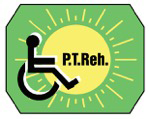


|
Current issue
Archive
Manuscripts accepted
About the journal
Editorial board
Reviewers
Abstracting and indexing
Contact
Instructions for authors
Publication charge
Ethical standards and procedures
Editorial System
Submit your Manuscript
|
4/2022
vol. 36 abstract:
Original article
Stress axis response to aerobic exercise in chronic obstructive pulmonary disease patients
Ali Mohamed Ali Ismail
1
1.
Department of Physical Therapy for Cardiovascular/Respiratory Disorders and Geriatrics,
Faculty of Physical Therapy, Cairo University, Giza, Egypt
Advances in Rehabilitation, 2020, 36(4), 24–32
Online publish date: 2022/12/20
View full text
Get citation
ENW EndNote
BIB JabRef, Mendeley
RIS Papers, Reference Manager, RefWorks, Zotero
AMA
APA
Chicago
Harvard
MLA
Vancouver
Introduction
The increased by-COVID mortality rate especially in comorbid diseased patients may increase psychological stress by over-activating the stress axis. Investigating the effect of home-based physical activity (HBPA) on stress axis in chronic obstructive pulmonary disease patients (COPD) was the study's aim. Material and methods Forty stable COPD men aged 55-68 years were randomly divided to study or control groups. The study group (n = 20) received 8-week home-based PA, 3 sessions weekly, while the control group (n = 20) didn't receive HBPA. The following measurements were done for both groups: body mass index (BMI), pulmonary function test (PFT), cortisol, interleukin-8 (IL-8), the total score of St. George's Respiratory Questionnaire (SGRQ) as an assessment health-related quality-of-life tool, hospital anxiety and depression scale (HADS), and 6-minute walking test (6MWT). Results All variables of the control-COPD group showed a non-significant improvement. Except BMI and PFT, the pre-to-post comparison of the study group's parameters as cortisol (262.15 ± 25.08 vs 219.80 ± 30.68 ng/mL; p < 0.001), IL-8 (15.00 ± 5.64 vs 12.26 ± 5.07 pg/ml; p < 0.001), HADS (7.85 ± 2.56 vs 5.36 ± 2.68 and 8.75 ± 2.46 vs 6.60 ± 2.70; p < 0.001 for depression and anxiety subscales, respectively), SGRQ total score (40.50 ± 11.70 vs 35.90 ± 11.75; p < 0.001), and 6MWT (514.85 ± 22.49 vs 575.90 ± 34.37; p < 0.001) showed significant improvements. Conclusions HBPA is a good tool to improve cortisol, IL-8, HADS, SGRQ, and 6MWT in COPD patients, especially during the COVID pandemic. keywords:
COPD, COVID-19 pandemic, exercise, stress, hypothalamic-pituitary-adrenal |
    |